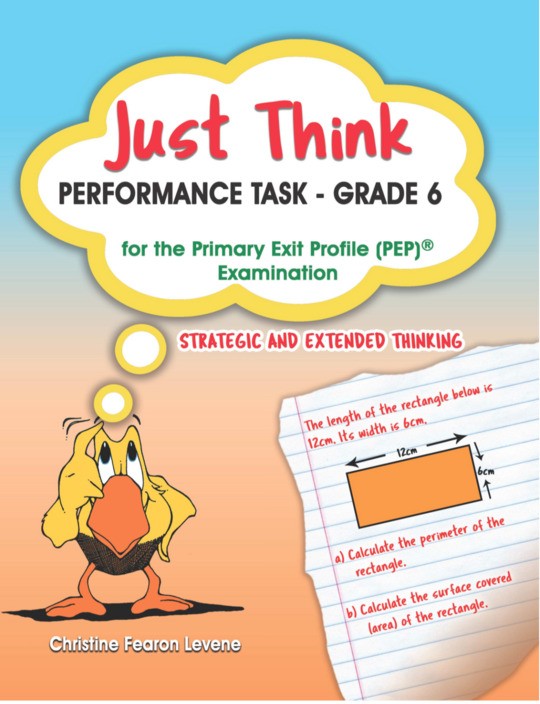
Rediscovering Mathematics for the Caribbean Grade Five
US$ 9.99
The publisher has enabled DRM protection, which means that you need to use the BookFusion iOS, Android or Web app to read this eBook. This eBook cannot be used outside of the BookFusion platform.
Description
Contents
Reviews
Language
English
ISBN
978-976-8245-49-6
Cover Page
Title Page
Copyright Page
Acknowledgement
Message to Student
Dedication
Contents
Assess Yourself
Sets
Notation and Place Value
Kinds of Numbers
Notation
Introducing the Million
Numerals and Number Names
Number Patterns
Place Value
Expanded Notation
Powers of 10 (exponents)
The Digit Zero
Cardinal and Ordinal Numbers
Sequencing
Rounding Whole Numbers?
Roman Numerals
Using the Calculator
Addition
Revision
Properties of Addition and Multiplication
Subtraction
Revision
Multiplication
Multiplication of 3 Numbers
Multiplication by Multiples of 10
Division
Division facts – Divisibility
Think About It
Order of Operations
Factors and Multiples
What are Factors?
Prime and Composite Numbers
Common Factors
Prime Factorization
Lowest Common Multiple (L.C.M.)
Highest Common Factor (H.C.F.)
Square and Square Root of Numbers
Square of Numbers
Square Roots
Fractions
What are Fractions?
Comparing Fractional Parts
Equivalent Fractions
Changing Improper Fractions to Whole Numbers or Mixed Numbers
Addition and Subtraction of Like Fractions
Addition and Subtraction of Related Fractions
Adding Unlike Fractions
Subtracting Unlike Fractions
Adding Fractions and Whole Numbers
Multiplying Fractions by Whole Numbers
Multiplying Whole Numbers by Fractions
Changing Mixed Numbers to Improper Fractions
Multiplying a Mixed Number by a Whole Number
Multiplying a Whole Number by a Mixed Number
Multiplying a Fraction by a Fraction
Division of Fractions
Dividing Mixed Numbers
Fractional Parts of a Quantity
Think About It
Decimals
Tenths
Hundredths
Thousandths
Fractions and decimals
Writing Fractions as Decimals
Writing Decimals as Fractions
Addition and Subtraction of Decimal Fractions
Multiplying and Dividing by 10, 100, and by 1,000
Multiplying Decimals by Decimals
Comparing and Ordering Decimals
Think About It
Percentage
Fractions, Decimals and Percentages
Using Percentages
Expressing as a Percentage
Increment and Discount
Direct Proportion
Estimation And Approximation
Money
Rates of Exchange
Profit and Loss
Percentage Profit and Loss
Transactions Involving Money
Banking
Financial Institutions
Value Added Tax
Hire Purchase
Think About It
Measurement
LENGTH
Perimeter
Area
The Area of a Square
The Area of a Triangle
MASS
Volume
CAPACITY
TEMPERATURE
TIME
Timeline
THE CALENDAR
SCALE DRAWING
THINK ABOUT IT
Geometry
Geometric Ideas
Point, Plane, Lines
Kinds of Lines
Measurement of Straight Lines
Measurement of Curved Lines
Geometrical Solids
What is a Solid?
Some Common Solids
Solids and Their Nets
Triangles
Basic properties of triangles
Properties of Perpendicular and Parallel Lines
Quadrilaterals
Symmetry
Congruence
Angles & The Use of
Protractors
Definition of an Angle
The Protractor
Kinds of Angles
Constructing Angles
Use of Set Square
Drawing Perpendicular Lines
Drawing Parallel Lines
Polygons
Tiling and Tessellation
Uses of The Compasses
Constructing circles
Bisecting Straight Lines
Circumference and
Area of a Circle
The Compass And
Direction
Algebra
Use of Letters to Represent Numbers
Mathematical Sentences
Addition and Subtraction Sentences
Multiplication and Division Sentences
Open Sentence
Data Handling, Statistics
& Probability
Data Handling
Graphical Representation of Data
What is Statistical Data?
The Different Types of Graphs
Research/Study
The Survey
Interpreting Data
Mean
Median
Mode
Range
Probability
Assessment
Assessment
Back Cover
The book hasn't received reviews yet.











